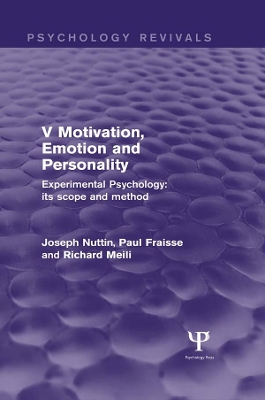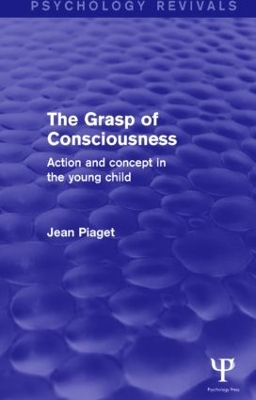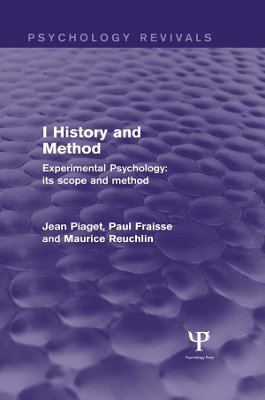Psychology Revivals
4 total works
Experimental Psychology Its Scope and Method: Volume V (Psychology Revivals)
by Joseph Nuttin, Paul Fraisse, and Richard Meili
First published in English in 1968, Joseph Nuttin contributes the first chapter, on Motivation. He discusses various aspects of the motivational process. Such as incentives, conflict, social motivation, and negative motivation, and describes the mechanism of the process. The second chapter, by Paul Fraisse, is on the Emotions. Fraisse examines the nature of the emotions, both on the behavioural and on the neurophysiological levels, and goes on to define and discuss moving situations. He shows the different types of expression an emotional reaction may take, and discusses the causes of hyper-emotionality.
Richard Meili writes on the Structure of the Personality, showing the importance of the idea of trait in the psychology of personality. He describes the use of the factorial method in the analysis of personality, and gives an account of the beginnings of personality, as well as the different parts, known as instances, of the total organization of personality.
Originally published in English in 1976, the book draws on and extends our knowledge of the process of learning. The subject of the study is the general stage in a child’s development that comes between his successful performance of an activity without knowing how he did it – that is, what he had to do in order to succeed – and the times when he becomes aware of what went into that action. The book reports the results of experiments conducted at the Centre of Genetic Epistemology. Children, ranging in age between four and adolescence, were asked to perform such tasks as walking on all fours, playing tiddlywinks, building a ramp for a toy car. They were then asked to explain how they had performed the task, and in some cases, to instruct the interviewer. Their answers show a number of surprising inaccuracies in the child’s ability to grasp the nature of what he has done.
Taking a broad view of his results, Piaget shows that they reveal several stages in the gradual development of the child’s conceptualization of his actions. In analysing each stage, Piaget argues that the child’s concept of his own action cannot be considered a simple matter of ‘enlightenment’, but must actively be reconstructed from his experience. This view has always been at the core of Piaget’s work, and a new area of the child’s mental world is here given definitive treatment.
Experimental Psychology Its Scope and Method: Volume VII (Psychology Revivals)
by Pierre Oleron, Jean Piaget, Barbel Inhelder, and Pierre Greco
First published in English in 1969, the book opens with a chapter by Pierre Oléron on intellectual activities. These fall into three groups: inductive activities (the apprehension of laws, relations and concepts), reasoning and problem solving. It describes typical methods and essential results obtained by relevant experiments.
There are two chapters by Jean Piaget and his collaborator Bärbel Inhelder. The first, on mental images, breaks new ground: it describes original experiments carried out by Piaget and associates with children of various ages. Piaget examines the relations between images and motor activity, imitation, drawing and operations. He also classifies images according to their degree of complexity and show why children have inadequate images of some processes. The second chapter is on intellectual operations and Piaget gives a summary of the main findings of a number of his earlier books, on the child’s notions of conservation, classification, seriation, number, measurement, time, speed and chance.
In the last chapter, Pierre Gréco discusses learning and intellectual structures. He describes the work of psychologists with rats in mazes and formulating theories of animal learning. Gestalt psychology and various other interpretations are examined and Greco also pays attention to Piaget’s view of ‘structural learning’ based on experience.
Experimental Psychology Its Scope and Method: Volume I (Psychology Revivals)
by Jean Piaget, Paul Fraisse, and Maurice Reuchlin
First published in English 1968, in this volume Paul Fraisse begins with history, looking at the evolution of experimental psychology, starting with its origins. He then moves on to the establishment of experimental psychology around the world. In the second chapter he discusses the experimental method. In the third chapter Jean Piaget tackles the questions of explanation and parallelism and their problems within experimental psychology. The final chapter by Maurice Reuchlin goes on to discuss measurement in psychology looking at various scales with their experimental conditions and numerical properties.



